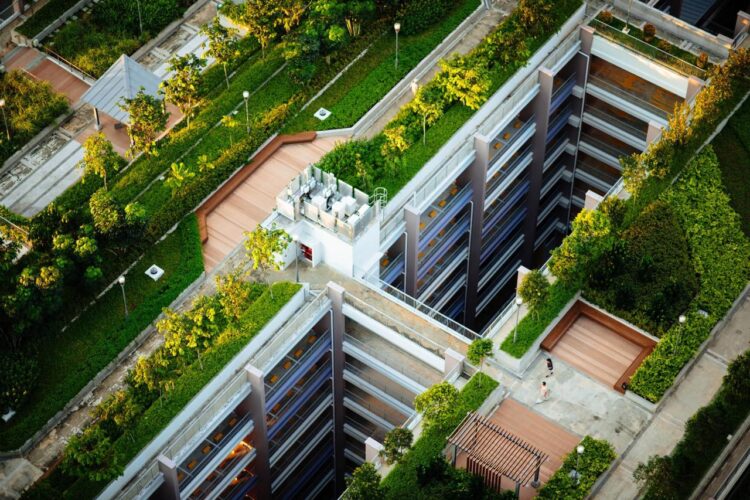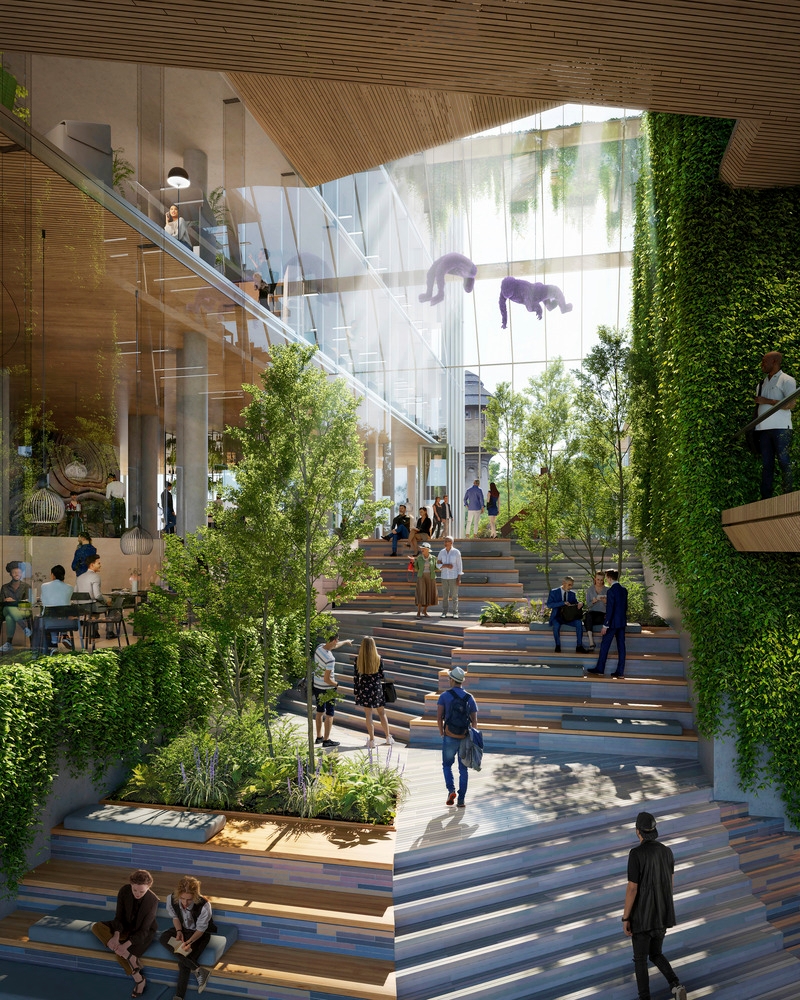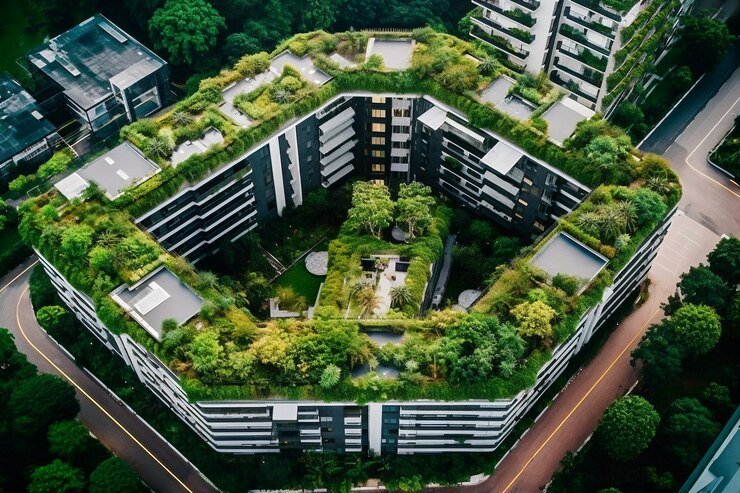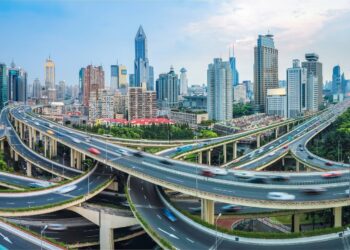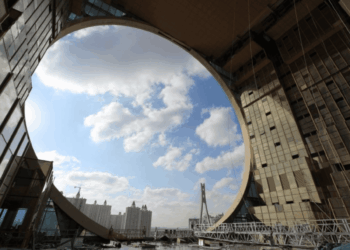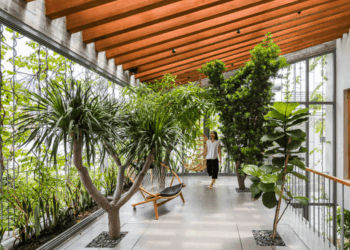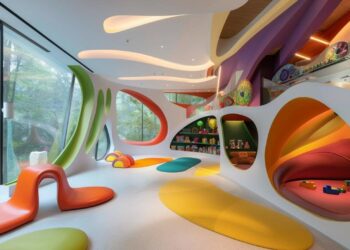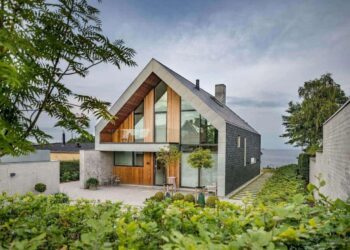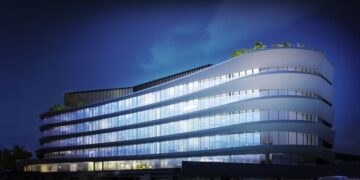Sustainable architecture is no longer a niche trend—it has evolved into a pivotal force in modern construction, influencing not just the design of buildings but entire communities and urban landscapes. As concerns about climate change and environmental degradation escalate, architects, engineers, and urban planners are embracing eco-friendly methods that reduce waste, conserve energy, and promote environmental harmony. This comprehensive article delves into the rise of sustainable architecture globally, explores its core components, examines influential projects, and highlights how technology and innovation are reshaping our built environment.
In an era where the impact of human activity on the environment is under unprecedented scrutiny, sustainable architecture presents a promising path forward. This approach to building design emphasizes responsible resource use, innovative materials, and energy-efficient systems. The impetus behind this architectural revolution is driven by both regulatory demands and a cultural shift among consumers and investors who increasingly prioritize environmental stewardship.
The global movement toward sustainable architecture reflects a blend of aesthetics, functionality, and environmental responsibility. Unlike traditional construction practices that often relied on non-renewable materials and energy-intensive processes, sustainable design seeks to harmonize the built environment with nature.
This article explores how sustainable architecture is gaining momentum worldwide by examining its key elements, the latest trends, practical applications, and its long-term benefits for both the environment and society. We will also discuss several success stories from diverse regions, highlighting innovative projects that have set new benchmarks in eco-friendly design.
Sustainable Architecture
Sustainable architecture, sometimes referred to as green building, represents an approach that focuses on the efficient use of resources, reduced carbon footprints, and enhanced indoor environmental quality. Its guiding principles are designed to minimize negative impacts on the natural environment while optimizing energy performance and occupant comfort.
A. Defining the Concept
At its core, sustainable architecture revolves around three primary pillars:
A. Environmental Conservation: Minimizing harm to the natural world by reducing emissions, conserving water, and using renewable resources.
B. Economic Viability: Implementing cost-effective solutions that lower operational expenses through energy savings and improved resource efficiency.
C. Social Equity: Creating living and working spaces that promote health, well-being, and community engagement.
These pillars are interdependent: a holistic design must balance ecological responsibility with economic constraints and social demands. By adopting sustainable building practices, architects are rethinking traditional construction models and contributing to a future where the built environment is in harmony with nature.
B. Key Principles of Sustainable Design
To ensure that structures contribute positively to the environment, sustainable architecture relies on several fundamental principles:
A. Energy Efficiency: Incorporating renewable energy sources such as solar or wind power and optimizing building envelopes to minimize energy loss.
B. Water Conservation: Utilizing systems for rainwater harvesting, greywater recycling, and efficient plumbing fixtures to reduce water consumption.
C. Material Efficiency: Employing sustainable, locally sourced, and recycled materials that reduce environmental burdens associated with production and transportation.
D. Indoor Environmental Quality: Enhancing natural lighting, ensuring proper ventilation, and using non-toxic materials to promote a healthier indoor climate.
E. Resilience and Adaptability: Designing structures that can withstand extreme weather events and adapt to future environmental challenges.
These criteria are not static; they evolve with technological advancements and changing environmental conditions, ultimately influencing building codes and industry standards on a global scale.
The Global Surge in Sustainable Architecture
Over the past decade, sustainable architecture has transitioned from an experimental concept to a mainstream practice. Several factors have contributed to its rapid adoption worldwide, driving regulatory changes, consumer preferences, and technological innovations.
A. Regulatory and Policy Drivers
Governments around the globe have recognized the urgent need to address climate change and environmental degradation. As a result, many have implemented policies and regulations that incentivize sustainable construction practices. Examples include tax credits, green building certifications, and stricter energy efficiency standards. These measures encourage developers to invest in sustainable technologies and materials, positioning green buildings as economically viable alternatives to conventional construction methods.
B. Economic Benefits and Market Demand
The economic benefits of sustainable architecture extend beyond operational cost savings. Green buildings often command higher property values and attract premium tenants due to their energy efficiency and enhanced occupant comfort. Investors are increasingly drawn to properties that promise long-term returns through reduced energy bills and maintenance costs.
Moreover, the rising demand for eco-friendly products has spurred innovation in building materials and technologies. From advanced insulation techniques to high-performance glazing systems, the architecture industry is constantly evolving in response to market needs. This dynamic interplay between demand and innovation is fueling the growth of sustainable architecture worldwide.
C. Technological Advancements
Technological breakthroughs have dramatically transformed the way architects conceptualize and execute sustainable designs. Building Information Modeling (BIM), energy simulation software, and advanced materials science are just a few tools that enable more precise and efficient design processes. These innovations help architects predict a building’s energy performance, optimize material usage, and create adaptable structures capable of responding to environmental stimuli.
In addition, the integration of smart technologies into building management systems allows for real-time monitoring and control of energy consumption. Sensors, automated systems, and predictive maintenance are now commonplace in modern sustainable buildings, ensuring that they operate at peak efficiency while reducing their overall carbon footprint.
Innovations Shaping Sustainable Architecture
Innovative projects from around the world are paving the way for a new era of sustainable architecture. These initiatives serve as benchmarks for environmental performance, demonstrating how creativity and technology can converge to solve some of the most pressing challenges of our time.
A. Innovative Materials and Construction Methods
Modern sustainable architecture relies heavily on the development of new materials and construction techniques that are both environmentally friendly and cost-effective. Consider the following examples of innovative materials and methods:
A. Cross-Laminated Timber (CLT): A renewable material that offers strength and versatility, CLT is increasingly used in multi-story constructions as an alternative to traditional steel and concrete. Its carbon sequestration properties make it an ideal component for green buildings.
B. Recycled Materials: Reclaimed wood, recycled plastic, and repurposed metal are being incorporated into new designs, reducing the demand for virgin materials while minimizing waste.
C. Nano-Technology Coatings: These advanced coatings improve energy efficiency by enhancing solar reflectivity and improving insulation.
D. Modular Construction: Prefabricated components manufactured off-site reduce construction waste, shorten build times, and minimize disruptions to local ecosystems.
B. Case Studies of Leading Projects
Several high-profile projects exemplify the potential of sustainable architecture to transform urban landscapes:
A. The Bullitt Center (USA): Known as the “greenest commercial building in the world,” this structure incorporates solar panels, rainwater harvesting, and composting toilets. Its innovative design serves as a model for sustainable commercial architecture.
B. The Edge (Netherlands): This highly intelligent office building employs cutting-edge technologies for energy management and is celebrated for its smart infrastructure that monitors energy usage in real time.
C. Bosco Verticale (Italy): These “vertical forests” integrate dense vegetation within a residential tower, creating a microclimate that mitigates air pollution and enhances biodiversity in the urban environment.
D. Zero Carbon Building (Singapore): An architectural marvel that integrates renewable energy sources, efficient water management systems, and green roofs, this project demonstrates that sustainable design is both feasible and beneficial in dense urban centers.
C. Design Strategies for a Sustainable Future
Architects employ a range of design strategies to meet the objectives of sustainability, ensuring that each building is not only environmentally responsible but also aesthetically pleasing and functional. Some of these strategies include:
A. Passive Solar Design: Leveraging natural sunlight for heating and lighting reduces reliance on artificial sources and lowers energy consumption.
B. Green Roofs and Walls: These features not only contribute to the building’s insulation but also promote urban biodiversity, reduce stormwater runoff, and create pleasant micro-environments.
C. Water-Sensitive Urban Design: Incorporating systems that manage stormwater and promote water reuse helps mitigate the impact of urbanization on local water resources.
D. Integration with Surrounding Nature: Sustainable designs often blur the line between indoor and outdoor spaces, creating harmonious connections that improve quality of life for inhabitants.
The Benefits of Adopting Sustainable Architecture
Sustainable architecture yields benefits that extend far beyond individual buildings—it enhances communities, supports the economy, and mitigates environmental challenges. These benefits are evident in multiple aspects of construction and urban development.
A. Environmental Impact
Green buildings significantly reduce the carbon emissions associated with construction and operation. By using energy-efficient systems and sustainable materials, these buildings help slow the pace of climate change and lower the overall environmental footprint. Moreover, green spaces incorporated into building designs contribute to carbon sequestration and offer ecological benefits such as habitat creation and improved air quality.
B. Economic Advantages
The cost savings realized through energy efficiency and reduced maintenance requirements contribute to the economic sustainability of green buildings. In addition to lower utility bills, these structures often qualify for government incentives, tax rebates, and green building certifications that further enhance their market value. Developers, investors, and tenants all benefit from the economic viability of sustainable architecture.
C. Social and Health Benefits
Sustainable architectural designs prioritize the health and well-being of occupants. Enhanced indoor air quality, abundant natural light, and improved thermal comfort create healthier living and working environments. Additionally, access to green spaces has been linked to better mental health and reduced stress levels, contributing to overall improved quality of life.
D. Urban Resilience
As urban areas continue to expand, sustainable architecture plays a crucial role in building resilient cities. By incorporating adaptive design principles and emergency response strategies, green buildings are better equipped to withstand natural disasters, such as floods and earthquakes. This resilience not only protects the built environment but also ensures the safety and security of urban populations during unforeseen events.
Technological Innovations and Future Trends
The future of sustainable architecture is bright, driven by continuous technological advancements and shifting paradigms in urban development. The integration of digital tools and cutting-edge construction techniques is paving the way for buildings that are smarter, more efficient, and more responsive to environmental conditions.
A. Smart Building Technologies
Digital transformation in architecture is reshaping the way buildings are designed, constructed, and operated. Smart sensors monitor everything from temperature and humidity to energy consumption patterns, allowing building systems to adjust autonomously in real time. This not only optimizes resource use but also provides valuable data for further improving building performance.
A. Internet of Things (IoT): IoT devices facilitate the continuous monitoring and management of building systems, leading to dynamic adjustments in energy use.
B. Building Automation Systems (BAS): These systems integrate various facets of building operations—from lighting to HVAC (heating, ventilation, and air conditioning)—into a cohesive, centrally controlled network.
C. Artificial Intelligence (AI): Leveraging AI in energy management enables predictive maintenance, optimizes energy distribution, and forecasts future building needs based on occupancy and usage data.
B. The Role of Renewable Energy
Renewable energy is at the heart of sustainable architecture. From rooftop solar panels to wind turbines integrated into building façades, renewable sources are crucial for reducing dependence on fossil fuels. Technological advancements continue to increase the efficiency and storage capabilities of renewable energy systems, making them more viable and attractive for both residential and commercial projects.
A. Solar Energy: Photovoltaic panels have become increasingly efficient and less expensive, making solar energy a cornerstone of green building strategies.
B. Wind and Geothermal Systems: These systems offer complementary solutions to solar energy, particularly in regions with suitable climatic conditions.
C. Energy Storage Innovations: Advances in battery technology and other storage methods are crucial for managing energy supply, especially during peak usage periods.
C. Digital Design and Construction Methods
Digital design tools such as Building Information Modeling (BIM) and Virtual Reality (VR) have revolutionized sustainable architecture by streamlining the design process and enhancing collaboration among stakeholders. These tools enable precise energy simulations, material optimization, and visualization of design outcomes before construction begins.
A. BIM: Facilitates detailed simulations and integrates various building systems into a unified digital model that supports sustainability initiatives from planning to operation.
B. VR and Augmented Reality (AR): These technologies allow architects to immerse themselves and stakeholders in a virtual simulation of the final structure, ensuring that sustainability considerations are effectively implemented.
Global Impact and Case Studies
The momentum behind sustainable architecture is evident in global initiatives and landmark projects that are redefining urban environments. Examining these case studies provides valuable insights into how green building practices are implemented across different cultural and climatic contexts.
A. Europe: Redefining Urban Landscapes
European cities are at the forefront of the green building revolution. For instance, several cities in Germany, Sweden, and the Netherlands have adopted stringent energy efficiency standards, leading to innovative projects that balance historical preservation with modern sustainability requirements.
A. Berlin’s Eco-Districts: In Berlin, urban redevelopment projects emphasize green infrastructure, energy-efficient housing, and integrated public transportation solutions, creating eco-districts that prioritize sustainability.
B. Copenhagen’s Climate-Resilient Design: Copenhagen’s transformation into a climate-resilient city is highlighted by its extensive use of green roofs, sustainable water management systems, and renewable energy infrastructure.
C. Stockholm’s Green Innovations: Stockholm has become a leader in sustainable urban planning by integrating green spaces, community-led sustainability projects, and energy-efficient residential designs.
B. North America: Balancing Growth and Sustainability
In North America, the drive for sustainable architecture is fueled by both governmental policies and private sector investments. Cities in the United States and Canada are embracing green technologies to combat urban sprawl and climate change.
A. New York’s Urban Green Spaces: New York City’s initiatives to expand urban green spaces and retrofit older buildings with energy-efficient technologies underscore the city’s commitment to sustainability.
B. Vancouver’s Eco-Certified Buildings: Vancouver has become synonymous with eco-friendly building practices, with numerous commercial and residential buildings receiving eco-certifications for their energy performance and use of sustainable materials.
C. Toronto’s Smart City Projects: Toronto’s smart city initiatives incorporate advanced technologies for energy management, transportation, and public health, setting new standards for urban resilience.
C. Asia-Pacific: Rapid Urbanization and Green Solutions
The Asia-Pacific region faces unique challenges due to rapid urbanization and high population densities. However, this also creates opportunities for sustainable urban planning and building design.
A. Singapore’s Urban Gardens: Singapore is renowned for integrating greenery into its urban fabric, with skyscrapers and public buildings featuring lush vertical gardens and rooftop parks.
B. Tokyo’s Resilient Infrastructure: Tokyo’s approach to sustainable architecture involves designing buildings that are resilient to earthquakes while incorporating energy-efficient systems and green building materials.
C. Sydney’s Eco-Districts: Sydney’s development of eco-districts and sustainable transport networks is a testament to the city’s commitment to balancing urban growth with environmental preservation.
Challenges and Future Outlook
Despite significant advancements, sustainable architecture faces several challenges that must be addressed to ensure widespread adoption. Overcoming these hurdles requires collaborative efforts from governments, the private sector, and the public.
A. Barriers to Implementation
Several factors can hinder the full-scale implementation of sustainable architecture initiatives:
A. High Initial Costs: Although green buildings offer long-term savings, the initial investment for energy-efficient systems and sustainable materials can be higher than traditional construction methods.
B. Regulatory Hurdles: In some regions, outdated building codes and regulations may not fully support or incentivize sustainable practices, limiting developers’ ability to incorporate innovative designs.
C. Lack of Awareness: Many stakeholders, including consumers and local governments, may lack sufficient knowledge about the benefits and practicalities of green building technologies.
B. Strategies for Overcoming Challenges
Addressing these challenges requires targeted strategies and collaborative policymaking:
A. Incentive Programs: Governments can establish financial incentives, such as tax breaks and grants, to support sustainable construction projects and offset higher upfront costs.
B. Education and Outreach: Increased awareness campaigns and training programs can equip industry professionals and communities with the necessary knowledge and skills to implement green technologies effectively.
C. Policy Reforms: Updating building codes and regulations to reflect modern sustainability standards is essential for encouraging the widespread adoption of eco-friendly practices.
C. The Future Trajectory of Sustainable Architecture
The integration of emerging technologies and innovative design principles promises to accelerate the adoption of sustainable architecture further. As global environmental concerns intensify, the pressure to develop buildings that are both functional and ecologically responsible will only grow stronger. Future trends include:
A. Adaptive Reuse of Existing Structures: Instead of demolishing older buildings, architects are increasingly focusing on retrofitting and repurposing them with sustainable technologies, thereby preserving cultural heritage while enhancing efficiency.
B. Biophilic Design: Emphasizing the connection between human beings and nature, biophilic design incorporates natural elements into built environments, resulting in improved occupant well-being and environmental benefits.
C. Circular Economy in Construction: The adoption of circular economy principles in architecture promotes recycling, reduces waste, and fosters the development of systems that enable materials to be reused indefinitely.
Conclusion
Sustainable architecture is emerging as a transformative force that redefines how we design, construct, and interact with our built environment. Its core principles of environmental conservation, economic feasibility, and social equity are driving innovation in building design and urban planning. As demonstrated by global case studies—from Europe’s eco-districts to Asia-Pacific’s adaptive reuse projects—green building practices deliver tangible benefits in terms of energy efficiency, economic savings, and enhanced quality of life.
Looking ahead, the momentum behind sustainable architecture is expected to accelerate, powered by advancements in technology, evolving regulatory frameworks, and a renewed commitment to environmental stewardship. This architectural revolution not only shapes our cities but also paves the way for a healthier, more resilient planet.
As architects, engineers, investors, and citizens continue to embrace sustainable practices, the future of our built environment will increasingly reflect a balance between development and nature, ensuring that progress does not come at the expense of the environment. Ultimately, the push for sustainable architecture is not merely a trend—it is an essential step toward building a more sustainable and equitable world.

